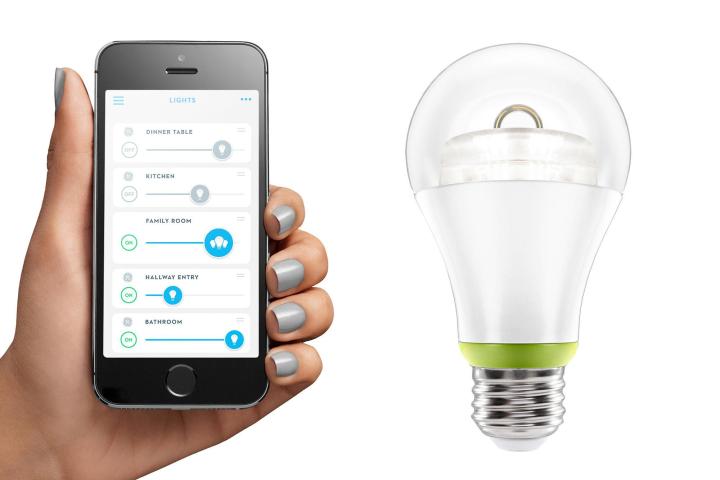
Adding to its rapidly-growing lineup of smart home products, GE pulled the curtain back on a handful connected LED light bulbs today. The bulbs, dubbed ‘Link’ lights, will allow users to remotely control the lighting in their homes from practically anywhere in the world, so long as they’ve got an internet connection.
They’re not quite on shelves just yet, but the bulbs will be available for pre-order starting June 30, and will come in three different styles:
- 60-watt replacement soft white (2700K) LED bulb, or A19 shape, which is commonly used for general lighting in table and floor lamps.
- Indoor soft white (2700K) floodlight LED, or BR30 shape, which is typically installed as downlighting in recessed ceiling or wall fixtures in the dining room, living room or other entertainment spaces.
- Indoor/outdoor-rated bright white (3000K) spotlight LED, or PAR 38, that’s generally used for outdoor security or as a spotlight.

This broad compatibility with other GE devices is essentially what will set Link bulbs apart from other smart bulbs offered by big-name competitors like Philips, Samsung, and LG — all of which have connected bulbs of their own on shelves already.
GE’s new bulbs will start at just $15 bucks, which is a steal when you consider how long-lasting they are.
Editors' Recommendations
- How to reset Philips Hue bulbs and light strips
- The Twinkly Matrix is a smart LED curtain with 500 mappable lights
- The best smart light bulbs
- Eve expands Matter lineup with smart outlet, light switch, and blinds
- How to reset Nanoleaf Essentials Smart Bulbs




